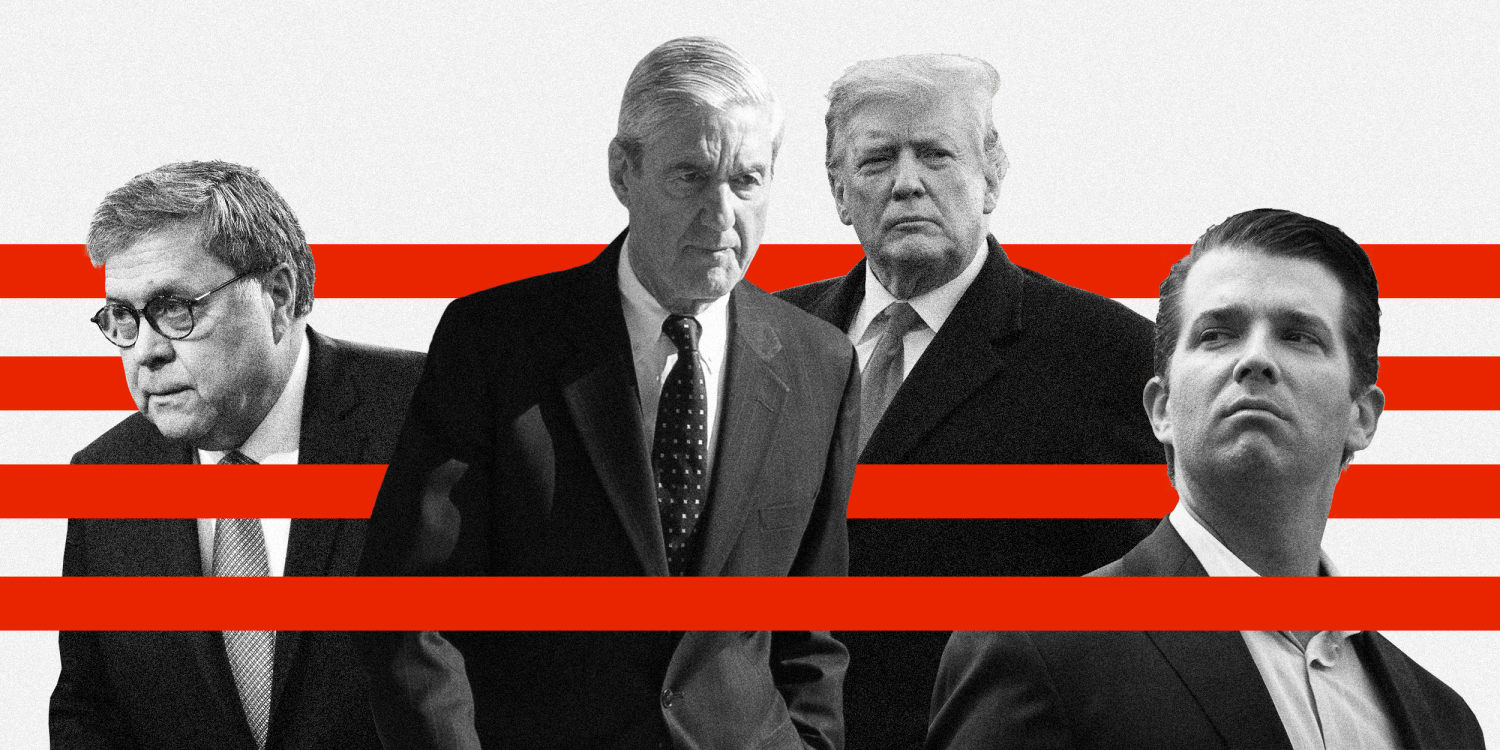
I have a rule in writing a film criticism: The entire plot must be reducible to a single sentence. If it takes longer, either you or the filmmaker is slow getting to the point.
I’d advise the same stratagem to the 24/7s and the politicians who love to appear on them. There are, at best, seven interesting points in the Mueller report that weren’t redacted. Both can be explained in two simple paragraphs. Forget where the report stands politically — people made that choice (unencumbered by facts) long ago. But no one has challenged the following findings, so let’s wrap this up and move on to bigger, more pressing issues. We’re flush with ’em.
- ‘The end of my presidency’
Citing written notes from then-Attorney General Jeff Sessions’ chief of staff Jody Hunt, the report said that Trump “slumped back in his chair,” after Sessions informed him of Mueller’s appointment.
“Oh my God. This is terrible. This is the end of my Presidency. I’m f—–,” Trump said, according to Hunt. “How could you let this happen, Jeff?” he asked, telling the attorney general he had let him down and that he was supposed to protect him. “This is the worst thing that ever happened to me,” Trump said.
- McGahn says Trump asked him to ‘do crazy s—‘
Former White House Counsel Don McGahn told investigators that Trump called him on two occasions to tell then-Deputy Attorney General Rod Rosenstein that Mueller had “conflicts” and needed to be removed as special counsel.
McGahn said that he agreed to do it to get off the phone, but that he planned to resign rather than carry out the order. He told former White House Chief of Staff Reince Priebus and adviser Steve Bannon that he planned to quit. Priebus told investigators McGahn didn’t get into specifics, but that Trump had asked him to “do crazy s—.”
- ‘Lawyers don’t take notes’
Trump later asked McGahn about notes he had taken of their meetings. “Lawyers don’t take notes. I never had a lawyer who took notes,” Trump said, according to the report. McGahn told him he took notes because he’s a “real lawyer” and it is important to create a written record.
“I’ve had a lot of great lawyers, like Roy Cohn. He did not take notes,” Trump said, referring to the controversial attorney who worked for Sen. Joseph McCarthy and who has been described as Trump’s mentor.
- Request for Russia to hack Clinton was ‘in jest’
In his written answers to the special counsel, Trump told Mueller that when he said, “Russia if you’re listening” during a July 2016 campaign event and asked Russia to hack into his opponent Hillary Clinton’s emails, he made the comment “in jest and sarcastically, as was apparent to any objective observer.”
But, according to the report, within about five hours of Trump’s request, Russian military intelligence agents “targeted Clinton’s personal office for the first time.” And according to Trump’s former national security adviser Michael Flynn, Trump “repeatedly” asked members of his campaign to track down emails Clinton was believed to have deleted.
- Sarah Sanders’ words ‘not founded on anything’
After Trump fired FBI Director James Comey, the then-deputy press secretary told reporters during a White House news conference that “the rank and file of the FBI had lost confidence in their director.” She had told reporters the claim was based on statements from “countless members of the FBI.”
But according to the report, when the special counsel’s office asked her about the claim, Sanders said it had been a “slip of the tongue.” She said she made the statement “in the heat of the moment,” and Mueller’s team concluded it “was not founded on anything.”
- ‘You have friends in high places’
After the FBI raided the home, office and hotel room of former Trump lawyer Michael Cohen, Trump reached out to Cohen publicly and privately, telling him to “hang in there” and “stay strong.” Trump lawyer Rudy Giuliani set up a “back channel” through another lawyer, Robert Costello, who told Cohen he should “Sleep well tonight … you have friends in high places.”
Cohen told Mueller that he understood that as long as he stayed on message, Trump would take care of him – either with a pardon or by shutting the investigation down.
- ‘I’ll get the president to send out a positive tweet’
Former New Jersey Gov. Chris Christie recalled a lunch at the White House with Trump and his son-in-law Jared Kushner, where the president asked him to call Comey and “tell him he’s part of the team.” Christie refused. Christie also recalled that Flynn called Kushner during the meeting to complain about something that then-Press Secretary Sean Spicer has said during a news conference.
“You know the president respects you,” Kushner told Flynn, according to Christie. “The president cares about you. I’ll get the president to send out a positive tweet about you later.” Trump then nodded in agreement, Christie said, according to the report.



